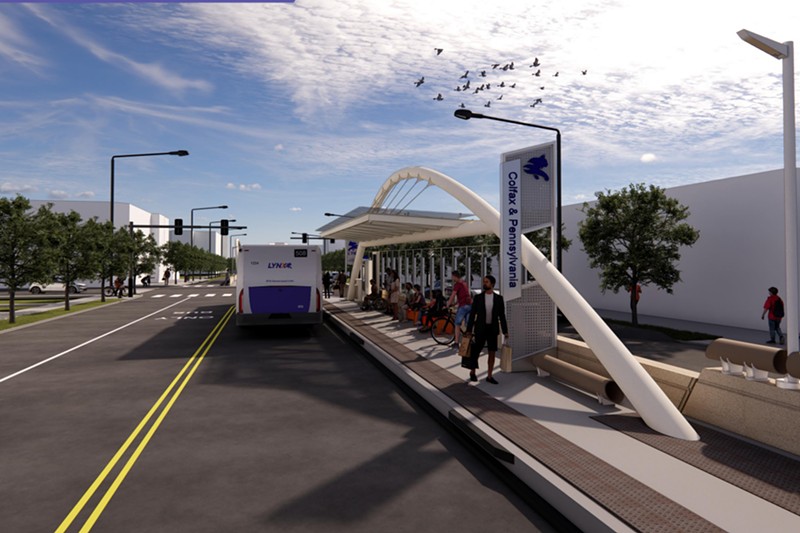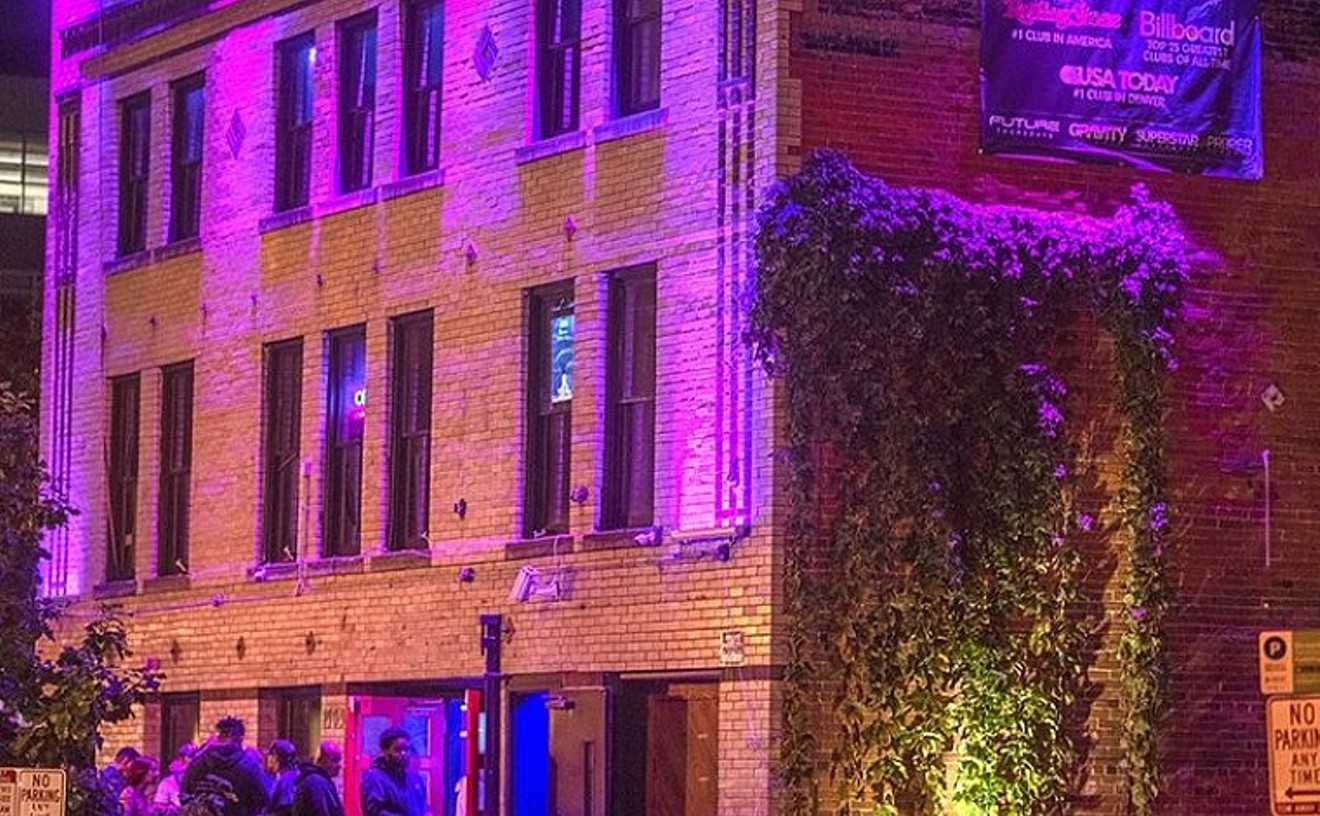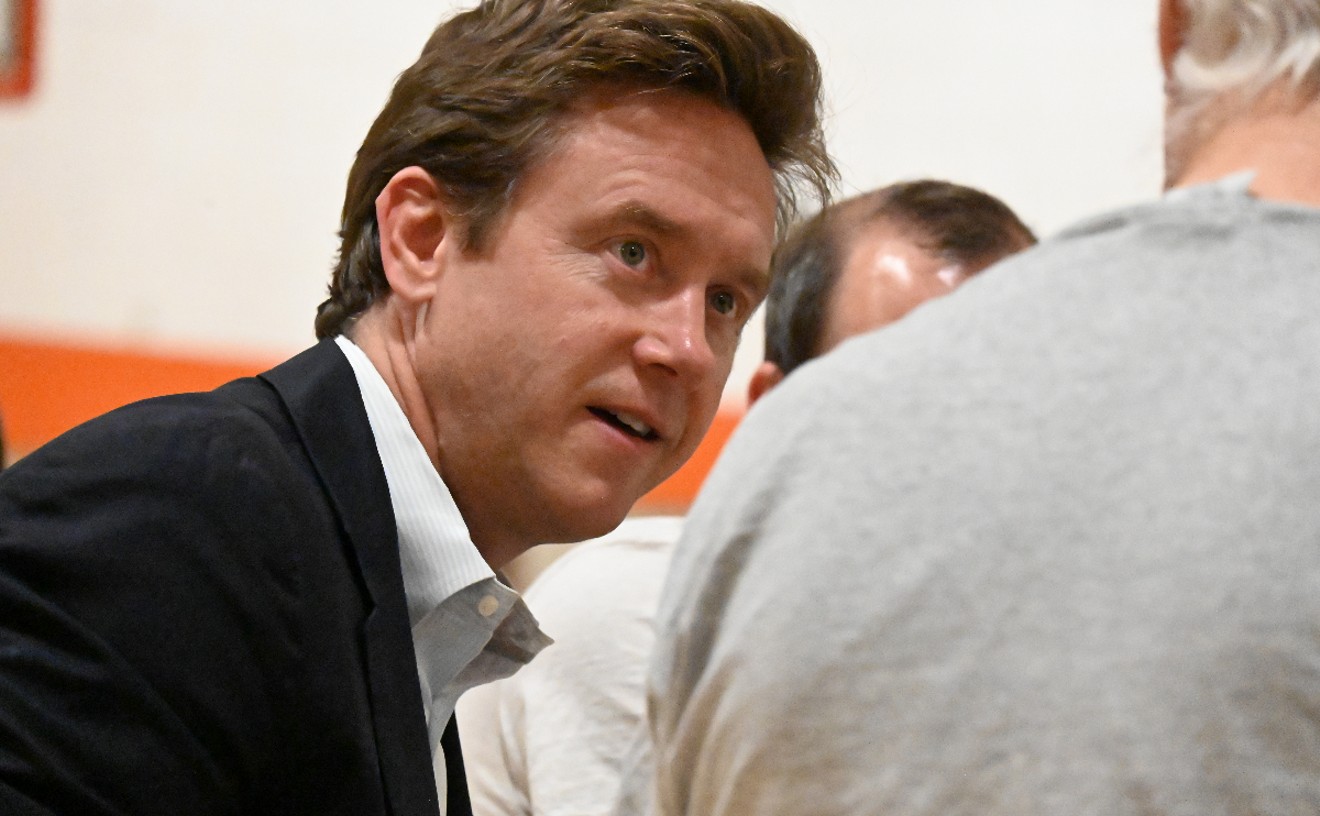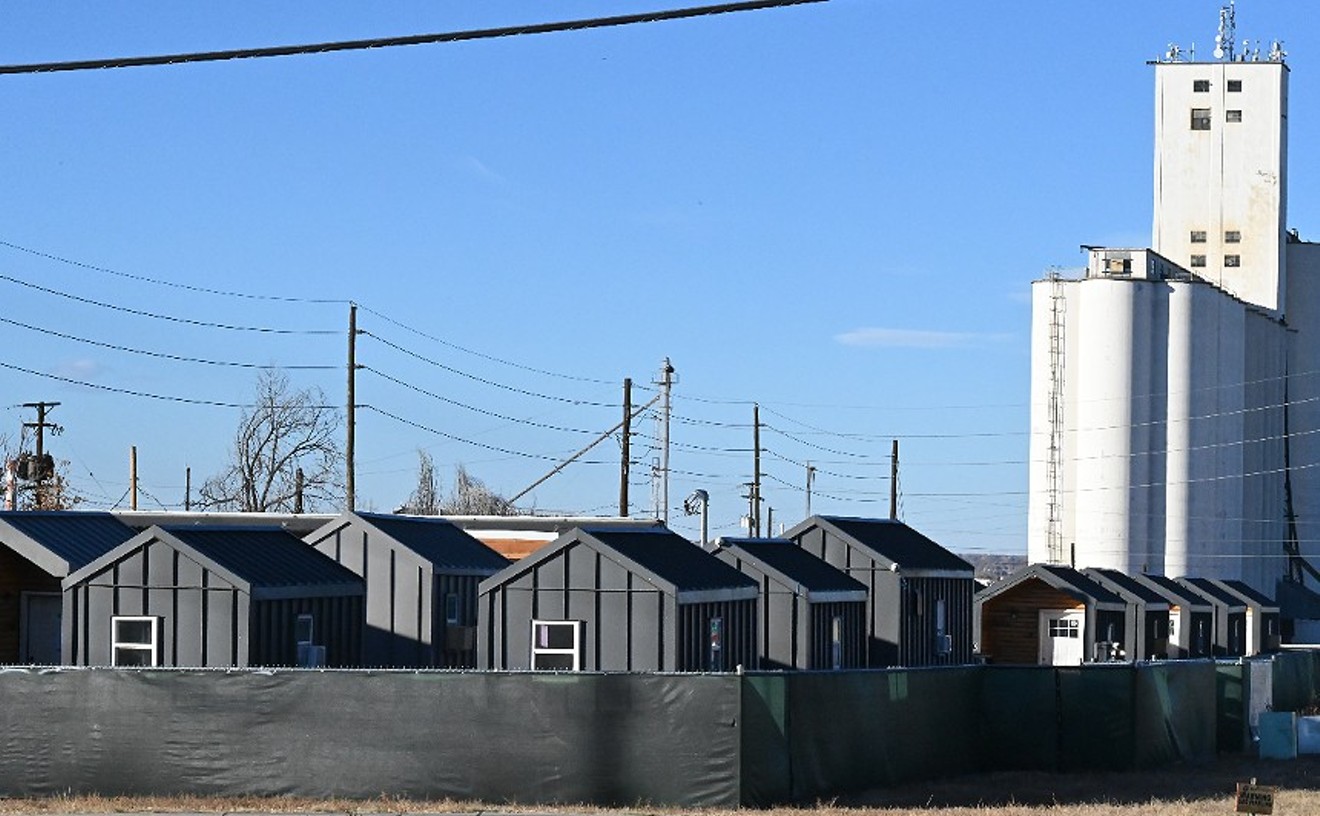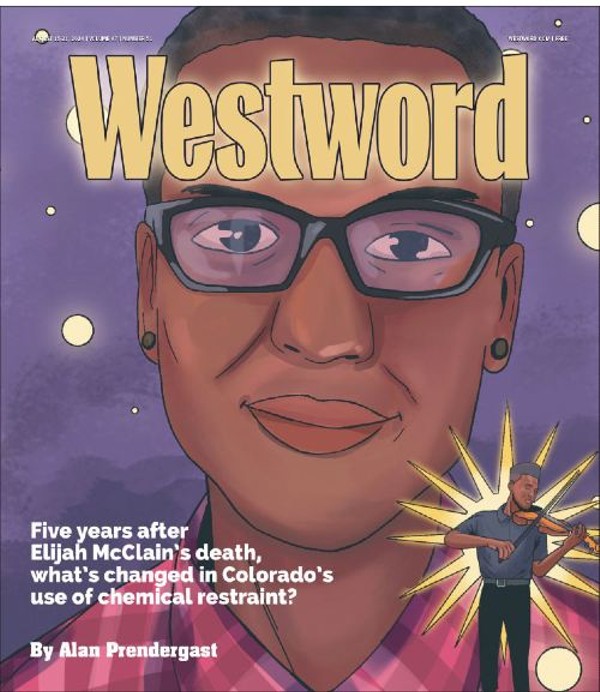According to the Colorado Department of Transportation, BRT will be "a high-capacity, efficient bus service that incorporates elements of light-rail." The Colfax Avenue project will cost $280 million, including $88 million from the City of Denver and $14 million from the City of Aurora.
A BRT line slated for Federal Boulevard will cost about $300 million, according to CDOT, which is in the early stages of planning another route for Colorado Boulevard, as well. According to the transportation department, the "high-frequency transit service" will be "more reliable, convenient and accessible" compared to traditional bus services in the Denver area, which make longer stops and get stuck in traffic at intersections.
But the Colfax Avenue BRT will also close two lanes of car traffic during construction and once completed, and Denver residents who live near the major thoroughfare worry that will lead speeding cars onto nearby residential roads.
Denis Moynihan has lived a block from Colfax Avenue for more than a decade. He's says he worried "the Colfax BRT will redirect speeding drivers away from Colfax Avenue and down 13th, 14th, 16th, 17th and 18th avenues," which are all residential roads located two to three blocks from Colfax Avenue and run parallel to it.
"It's going to drive more high-speed traffic onto adjacent avenues and streets, into the neighborhoods," Moynihan adds. "These streets are already dangerous thoroughfares for pedestrians, cyclists, children, pets, wildlife — anything that happens to be there."
He isn't the only resident in the area to mention this to the city, according to Nancy Kuhn, spokesperson for the Department of Transportation and Infrastructure (DOTI).
From January to April this year, the city surveyed more than 800 residents living near Colfax Avenue, and many of them were concerned about how the BRT will affect safety on those parallel roads as well, Kuhn says. DOTI believes that speeding down those corridors won't be a problem, however, as planners expect BRT to attract so many riders that it will take cars and speeding drivers off the road in those nearby residential areas.
"With Colfax BRT, we expect to see an increase in bus ridership that will take cars off the road," Kuhn says. "It will consolidate and replace the existing 15 and 15L bus routes, resulting in a more reliable and frequent bus service, arriving every 4.3 minutes during the day. ...With these service improvements, we estimate seeing an increase in ridership of up to 31 percent by 2040 versus a no-build scenario."
Moynihan doubts the BRT will be so successful that it cancels out increased risk of diverted traffic in his neighborhood.
"No one at Anschutz Medical Campus who currently chooses not to ride the 15 or 15L is magically going to choose to ride the BRT, or it will be a handful of people," he argues. "The downtown vacancy rates are almost catastrophic, so I don't know who is going to be served by the BRT." 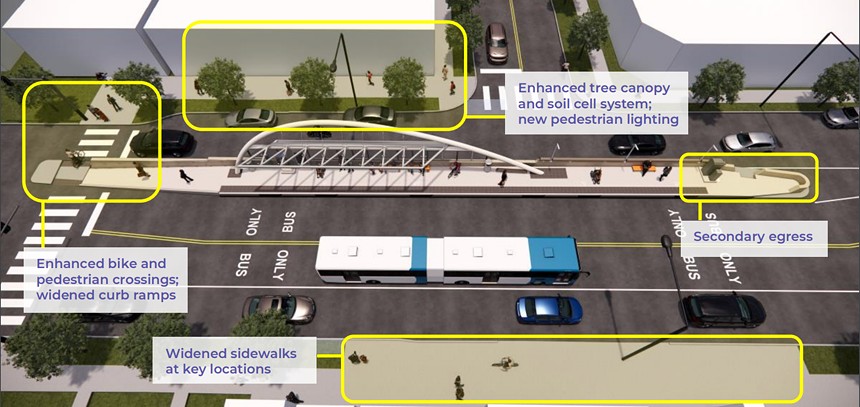 During a community webinar on July 23, engineering consultant Charlie Alexander, who works with BRT-planning firm Fehr & Peer, told residents that the city is also considering safety measure like increasing the number of red lights on those corridors and extending no-parking zones to make it easier to see people crossing the street.
During a community webinar on July 23, engineering consultant Charlie Alexander, who works with BRT-planning firm Fehr & Peer, told residents that the city is also considering safety measure like increasing the number of red lights on those corridors and extending no-parking zones to make it easier to see people crossing the street.
Moynihan isn't happy with the idea of adding red lights, either: "I see, every day, people blow through the red light on 14th [Avenue] between Adams and Cook [streets]. It is largely viewed as optional." He would rather see more police on these parallel roads to stop "the criminal behavior of so many drivers," he says.
"There are just too many drivers that speed through our neighborhoods and run red lights and run stop signs," Moynihan says. "We have distracted drivers. It's a constellation of things we have to address."
Moynihan doubts the BRT will be so successful that it cancels out increased risk of diverted traffic in his neighborhood.
"No one at Anschutz Medical Campus who currently chooses not to ride the 15 or 15L is magically going to choose to ride the BRT, or it will be a handful of people," he argues. "The downtown vacancy rates are almost catastrophic, so I don't know who is going to be served by the BRT."

An overhead view of the Colfax Avenue BRT shows that two buses will run down the middle of the thoroughfare, reducing the four-lane avenue to two lanes for cars.
Courtesy of the Denver Department of Transportation and Infrastructure
Moynihan isn't happy with the idea of adding red lights, either: "I see, every day, people blow through the red light on 14th [Avenue] between Adams and Cook [streets]. It is largely viewed as optional." He would rather see more police on these parallel roads to stop "the criminal behavior of so many drivers," he says.
"There are just too many drivers that speed through our neighborhoods and run red lights and run stop signs," Moynihan says. "We have distracted drivers. It's a constellation of things we have to address."
In response to resident concerns, the city has been studying roads parallel to Colfax, from their intersections with Broadway to their intersections with Yosemite Street, as well as stretches of 18th Avenue, Kuhn says.
"There are many locations on these corridors that have more crashes than what we would have expected," Alexander said. "The number of crashes that happen at a location tends to trend with the number of vehicles or the number of users at that location, so as those numbers go up, the number of crashes goes up as well."
On top of that, 63 percent of vehicles are estimated to drive above the speed limit on those corridors, according to DOTI. Those corridors have a posted speed limit of thirty miles per hour, and while most people go 35 to forty miles per hour on those streets, about 5 percent of drivers go ten or more miles per hour faster than the posted speed limit.
"No matter which way you look at it, speeds are high on these corridors," Alexander said during the July meeting. "The data reinforces what we've heard from members of the community."
The city is well aware that building BRT will divert traffic, too. According to a report by Fehr & Peers, the Colfax BRT line will increase the amount of traffic on the parallel streets from 13th to 18th avenues "by an estimated average of an additional two to five cars per minute on each street during weekday rush hour."
For Moynihan, the problem is glaring, and the city hasn't done enough to reassure him.
"The design and planning process for the BRT has done nothing to alleviate or to mitigate what is certainly going to be increased traffic in the neighborhood," he says.
The construction of BRT is set to begin in the fall and last deep into 2027, according to DOTI. Moynihan says he's not opposed to BRT entirely, but wants his neighborhood to be safe. When Mayor Mike Johnston toured Denver to hear the top safety concerns, the most common requests had to do with speeding cars and traffic safety.
"In short, I have no problems with sensible improvements to rapid transit. I fully support that," Moynihan concludes. "But it's going to make the life of those of us in the neighborhoods closer to Colfax much more dangerous."

